Enhanced Weathering: Making Rocks Weather Faster to Undo Climate Change
8 minute read
Updated on: 24 Jul 2021
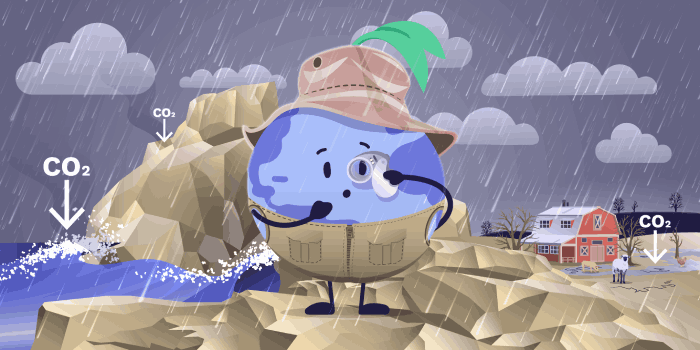
Weathering happens when rocks are broken down physically into smaller rocks, sand, mud, and clay . Many chemical transformations also occur throughout this process
.
Silicate rocks (those containing silicon and oxygen) make up about 95% of the top few layers of the Earth. Weathering of these rocks captures CO₂ from the atmosphere and is thought to help keep the climate in balance
. This process usually takes place over millions of years
, but what if we could speed it up?
How does rock weathering capture CO₂?
When silicate rocks are broken down into clays and soils, they react with CO₂ in the air to produce new minerals : the CO₂ is converted into bicarbonate (HCO₃⁻), which is transported to the ocean by rivers and surface water
.
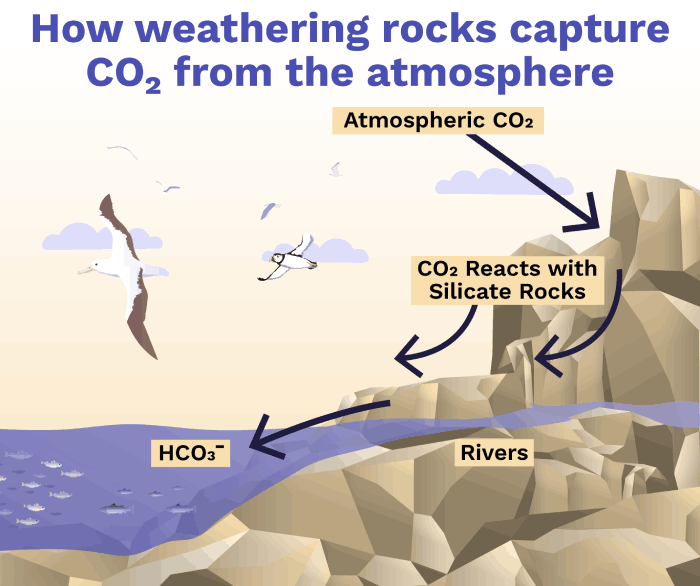
Natural silicate weathering
Enhanced weathering is about speeding up natural weathering in order to store more CO₂ in a shorter time.
This involves grinding up a very large amount of rocks into powder to increase their surface area, and then spreading them over the ground .
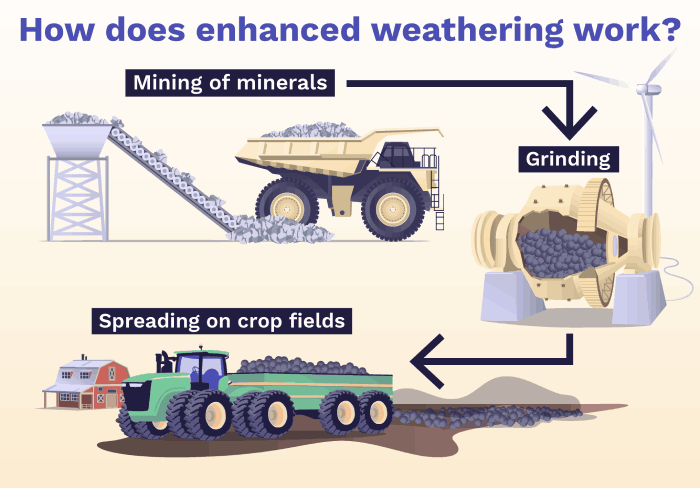
Process of enhanced weathering
The rocks should be spread in warm, damp places where weathering will occur quickly, and in places which are easy to access - such as farmed land .
Because these rocks contain many of the nutrients plants need to grow, especially phosphorus and potassium , enhanced weathering can lead to higher crop yields as well as storing carbon dioxide
.
The bicarbonate ions produced by weathering can also make soils less acidic, which can improve conditions for plant growth if acidic conditions are limiting plant growth. By increasing plant growth rates, more photosynthesis could also take place, absorbing even more CO₂ from the atmosphere
.
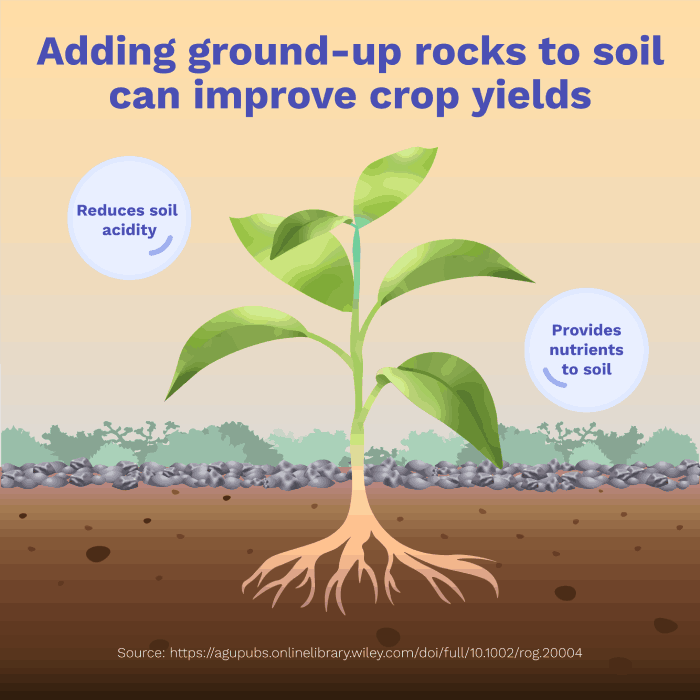
Benefits of enhanced weathering for growing crops
Some weathering products will remain in the soil, while others will be washed away by rain and wind and will eventually end up in the ocean . Just like in soil, bicarbonate ions in the ocean make the water less acidic
and this might reduce the effects of ocean acidification
.
By making oceans less acidic, enhanced weathering could protect animals and plants in the ocean, particularly corals and animals with shells .
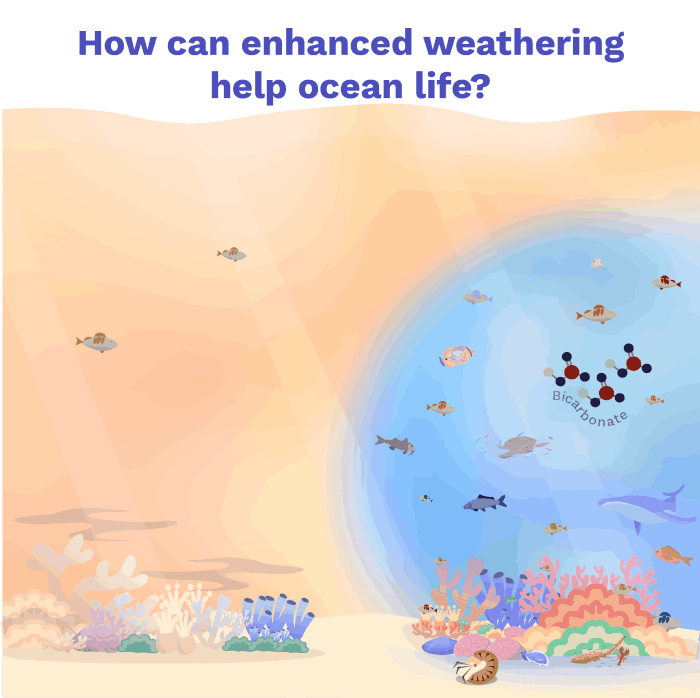
Benefits of enhanced weathering for animals and plants in the ocean
What makes enhanced weathering difficult?
Grinding the rock into powder uses a lot of energy; ideally, we need to use renewable energy to minimise extra CO₂ emissions here .
Transporting the crushed rock to the spreading site could be the most expensive part of the process, depending on the distance and method of transport . Crushing the rock may also be very costly, however, newer technologies may soon reduce this cost
.
Road vehicles, trains, and ships can all be used to transport the rock powder, but trains are 2 times cheaper and ships are 50 times cheaper than road vehicles .
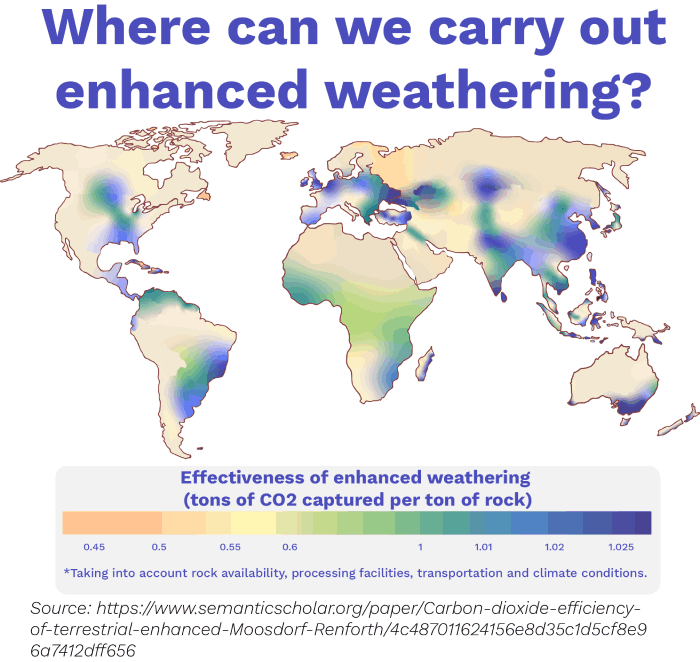
Suitable areas for enhanced weathering.
Can enhanced weathering affect our health?
The rock powder used for enhanced weathering may have impacts on human health if it is breathed in, especially because some rocks contain toxic compounds like asbestos . There is also the risk that heavy metals from the rocks could end up in food crops
.
The areas best suited for enhanced weathering (hot, wet climates) are also often the poorest and least protected . We need to make sure that enhanced weathering does not harm vulnerable people
. This might involve choosing types of rock that are less effective at removing CO₂ and more expensive, but which are also less toxic, like basalt
.
How much will it cost?
We don’t really know: predictions of cost vary widely, mainly depending on how much energy is needed to grind up the rocks and transport them.
If done on farmland in the UK, it might cost between US$24-578 /tCO₂.
Different types of rock will also have different costs, depending on how much CO₂ they can absorb and how common they are .
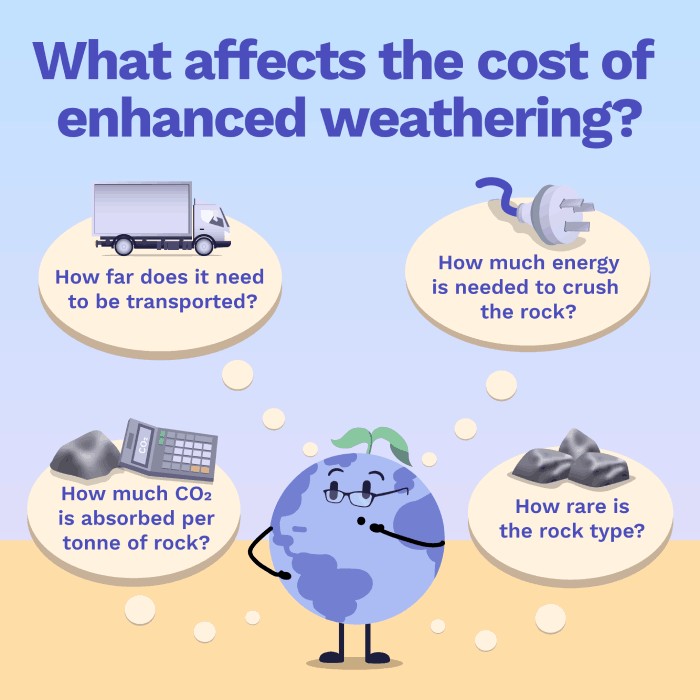
Factors influencing the cost of enhanced weathering
Most estimates don’t look at other benefits of weathering, like increased crop yields from higher levels of soil nutrients, which could make the overall cost lower .
How much CO₂ can it remove?
Some estimates are much bigger (up to 95 GtCO₂/year), but this is probably too optimistic . It would need a huge amount of rock, and would be very expensive
.
There are still big uncertainties about how effective enhanced weathering will be in the real world, with different temperatures, and amounts of rainfall, as well as different types of soil and microbes in that soil .
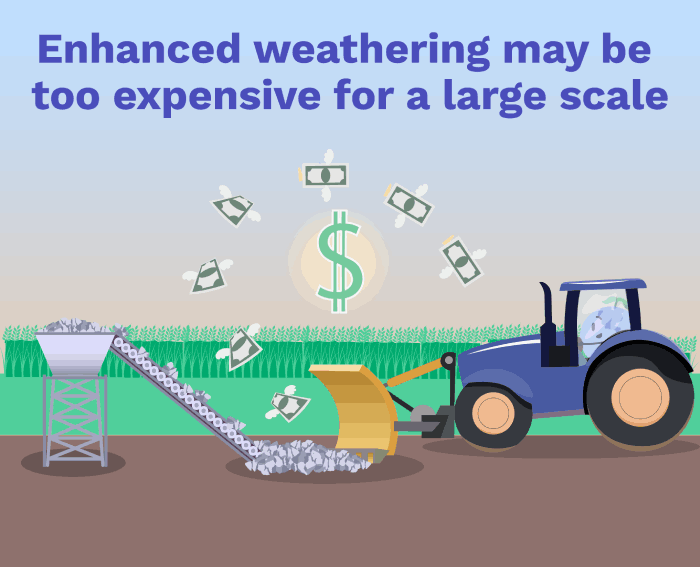
The cost of enhanced weathering
Conclusion
If it works how we expect it to, enhanced weathering could have a very large potential to remove CO₂ from the atmosphere. However, it is expensive due to the high energy costs of crushing and transporting so much rock. There is still a lot of research we need to do to find out how effective it will be in the real world.
One of the biggest problems for this method of carbon removal is how much energy it requires . So what if we could remove carbon dioxide and produce energy at the same time? Next chapter!